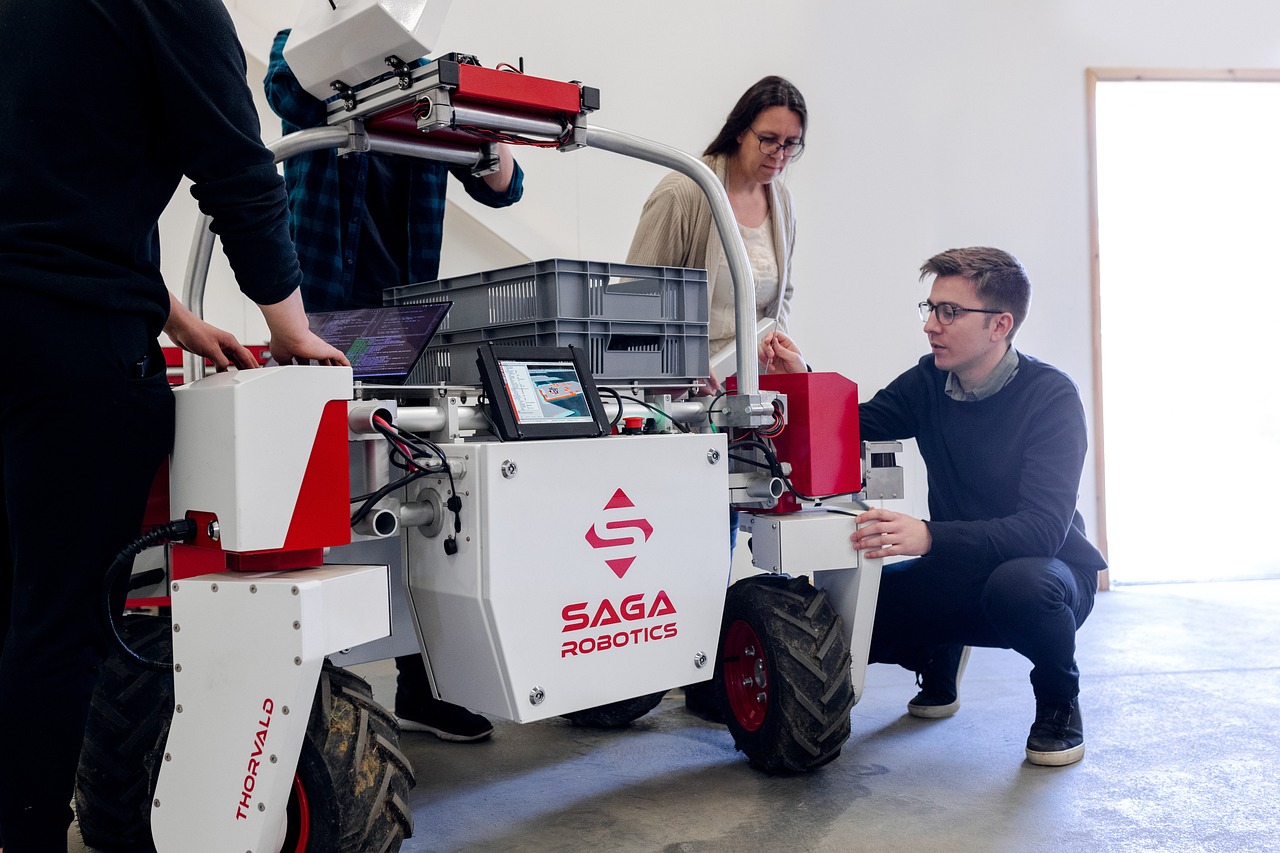AI development is no longer a futuristic fantasy; it’s a present-day reality reshaping industries and redefining how we interact with the world. From personalized recommendations on your favorite streaming service to self-driving cars navigating complex city streets, artificial intelligence is rapidly evolving. This blog post will delve into the intricacies of AI development, exploring its core components, methodologies, and the exciting possibilities it unlocks. Whether you’re a seasoned developer or simply curious about the field, this comprehensive guide will provide valuable insights into the world of AI.
Understanding the Fundamentals of AI Development
AI development is a multifaceted field that encompasses various techniques and approaches. To begin, let’s explore the foundational aspects that underpin the creation of intelligent systems.
What is Artificial Intelligence?
At its core, artificial intelligence aims to create machines capable of performing tasks that typically require human intelligence. This includes:
- Learning: Acquiring knowledge and improving performance over time.
- Reasoning: Solving problems and making inferences based on available information.
- Perception: Interpreting sensory data, such as images, sounds, and text.
- Problem-solving: Identifying and implementing solutions to complex challenges.
AI systems achieve these capabilities through algorithms and models trained on vast datasets. The more data an AI system processes, the better it becomes at recognizing patterns, making predictions, and generating insights.
Key Components of AI Development
Several key components are crucial for developing effective AI solutions:
- Data: High-quality, relevant data is the lifeblood of AI. The accuracy and comprehensiveness of the data directly impact the performance of the AI model.
- Algorithms: These are the set of rules and instructions that enable the AI system to learn and make decisions. Examples include linear regression, decision trees, and neural networks.
- Programming Languages: Python is a popular choice for AI development due to its extensive libraries (e.g., TensorFlow, PyTorch, scikit-learn) and ease of use. Other languages like R, Java, and C++ are also used.
- Hardware: AI models, especially deep learning models, require significant computational power. GPUs (Graphics Processing Units) are often used to accelerate the training process.
- Cloud Computing: Cloud platforms like AWS, Google Cloud, and Azure provide the infrastructure and services needed to develop, train, and deploy AI models at scale.
Types of AI
Understanding the different types of AI is essential for choosing the right approach for a specific application:
- Narrow or Weak AI: Designed to perform a specific task, such as playing chess or recognizing faces. This is the type of AI we primarily encounter today.
- General or Strong AI: Hypothetical AI with human-level intelligence, capable of performing any intellectual task that a human being can.
- Super AI: AI that surpasses human intelligence in all aspects, including creativity, problem-solving, and general wisdom.
Core Methodologies in AI Development
The landscape of AI development is diverse, with various methodologies suited for different problems. This section explores some of the most prominent approaches.
Machine Learning (ML)
Machine learning is a subset of AI that focuses on enabling machines to learn from data without explicit programming.
- Supervised Learning: Training a model on labeled data, where the input and output are known. For example, training a model to classify emails as spam or not spam.
Example: Predicting house prices based on features like size, location, and number of bedrooms.
- Unsupervised Learning: Discovering patterns and relationships in unlabeled data. For example, clustering customers into different segments based on their purchasing behavior.
Example: Anomaly detection in manufacturing processes to identify defective products.
- Reinforcement Learning: Training an agent to make decisions in an environment to maximize a reward. For example, training a robot to navigate a maze.
Example: Training an AI to play games like Go or chess.
Deep Learning (DL)
Deep learning is a subfield of machine learning that uses artificial neural networks with multiple layers to analyze data.
- Convolutional Neural Networks (CNNs): Excellent for image and video recognition tasks.
Example: Identifying objects in an image or classifying images based on their content.
- Recurrent Neural Networks (RNNs): Designed for processing sequential data, such as text and time series.
Example: Language translation or predicting stock prices.
- Transformers: A more recent architecture that has revolutionized natural language processing (NLP).
Example: Generating human-like text or answering questions based on a given context.
Natural Language Processing (NLP)
NLP focuses on enabling computers to understand, interpret, and generate human language.
- Text Classification: Categorizing text into different categories.
Example: Sentiment analysis to determine the emotional tone of a piece of text.
- Named Entity Recognition (NER): Identifying and classifying named entities in text, such as people, organizations, and locations.
Example: Extracting key information from news articles.
- Machine Translation: Automatically translating text from one language to another.
Example: Google Translate.
The AI Development Lifecycle
Developing an AI solution is an iterative process that involves several stages. Understanding this lifecycle is crucial for successful AI development.
Data Collection and Preparation
- Gathering Data: Identify and collect relevant data from various sources, such as databases, APIs, and web scraping.
- Data Cleaning: Remove errors, inconsistencies, and missing values from the data.
- Data Transformation: Convert data into a suitable format for training the AI model. This may involve normalization, scaling, and feature engineering.
- Data Splitting: Divide the data into training, validation, and testing sets. The training set is used to train the model, the validation set is used to tune hyperparameters, and the testing set is used to evaluate the model’s performance.
Model Training and Evaluation
- Model Selection: Choose the appropriate AI model based on the problem and the data.
- Training: Train the model on the training data using an optimization algorithm.
- Hyperparameter Tuning: Adjust the model’s hyperparameters to improve its performance.
- Evaluation: Evaluate the model’s performance on the validation and testing sets using appropriate metrics, such as accuracy, precision, recall, and F1-score.
Deployment and Monitoring
- Deployment: Deploy the trained model to a production environment, where it can be used to make predictions on new data.
- Monitoring: Continuously monitor the model’s performance and retrain it as needed to maintain its accuracy and relevance.
- Maintenance: Regular updates and maintenance are essential to keep the AI system functioning optimally.
Practical Example: Building a Sentiment Analysis Model
Let’s illustrate the AI development lifecycle with a practical example: building a sentiment analysis model to classify customer reviews as positive, negative, or neutral.
Clean the data by removing punctuation, stop words, and HTML tags.
Tokenize the text into individual words.
Convert the text into numerical vectors using techniques like TF-IDF or word embeddings.
Choose a machine learning model, such as a Naive Bayes classifier or a Support Vector Machine (SVM).
Train the model on the training data.
Tune the model’s hyperparameters using the validation data.
Evaluate the model’s performance on the testing data using metrics like accuracy, precision, and recall.
Deploy the trained model as a web service or integrate it into an existing application.
Monitor the model’s performance and retrain it as new customer reviews become available.
Ethical Considerations in AI Development
As AI systems become more prevalent, it is crucial to address the ethical implications of their development and deployment.
Bias and Fairness
AI models can inherit biases from the data they are trained on, leading to unfair or discriminatory outcomes.
- Mitigation Strategies:
Carefully examine the data for potential biases.
Use techniques like data augmentation or adversarial training to mitigate bias.
Regularly audit AI models for fairness.
Transparency and Explainability
Understanding how AI models make decisions is essential for building trust and accountability.
- Explainable AI (XAI): Developing AI models that provide insights into their decision-making process.
- Techniques for XAI:
Feature importance analysis.
LIME (Local Interpretable Model-agnostic Explanations).
SHAP (SHapley Additive exPlanations).
Privacy and Security
Protecting sensitive data and ensuring the security of AI systems are critical concerns.
- Data Encryption: Encrypting data at rest and in transit to prevent unauthorized access.
- Access Controls: Implementing strict access controls to limit who can access and modify AI models and data.
- Regular Security Audits: Conducting regular security audits to identify and address potential vulnerabilities.
The Future of AI Development
AI is rapidly evolving, and the future holds exciting possibilities.
Emerging Trends
- Generative AI: AI models that can generate new content, such as images, music, and text.
* Example: DALL-E 2 and Stable Diffusion for generating images from text descriptions.
- AI-powered Automation: Automating tasks and processes across various industries, from manufacturing to customer service.
- Edge AI: Deploying AI models on edge devices, such as smartphones and IoT devices, to enable real-time processing and reduce latency.
- Quantum AI: Combining quantum computing with AI to solve complex problems that are beyond the capabilities of classical computers.
Actionable Takeaways
- Stay updated with the latest advancements in AI.
- Experiment with different AI tools and techniques.
- Consider the ethical implications of AI in your projects.
- Focus on building AI solutions that solve real-world problems.
Conclusion
AI development is a transformative field with the potential to revolutionize industries and improve lives. By understanding the fundamentals, exploring core methodologies, and addressing ethical considerations, developers can create impactful AI solutions that drive innovation and shape the future. As AI continues to evolve, staying informed and embracing new technologies will be crucial for success in this dynamic field. The journey of AI development is a continuous learning process, and the opportunities are limitless.




